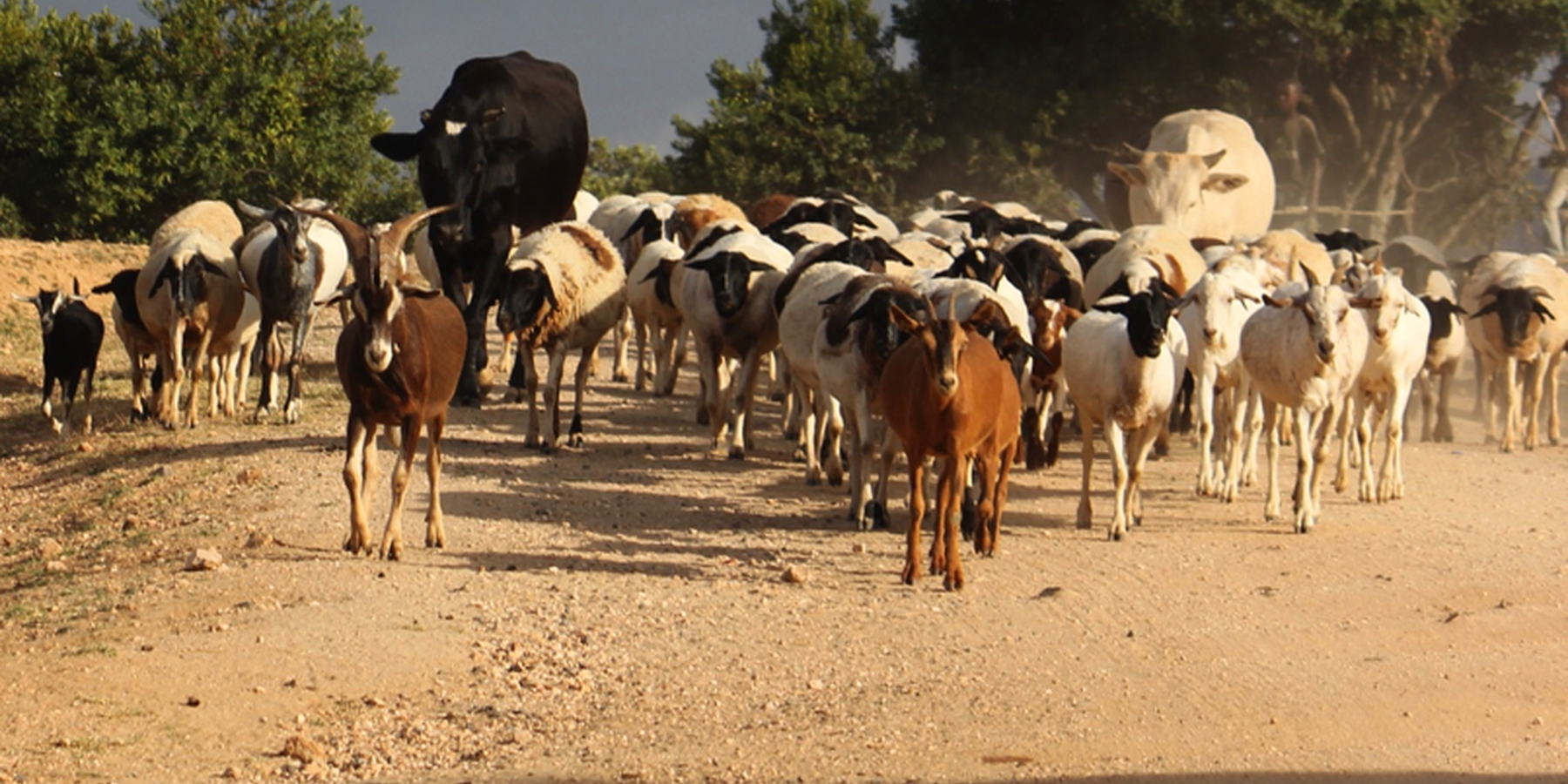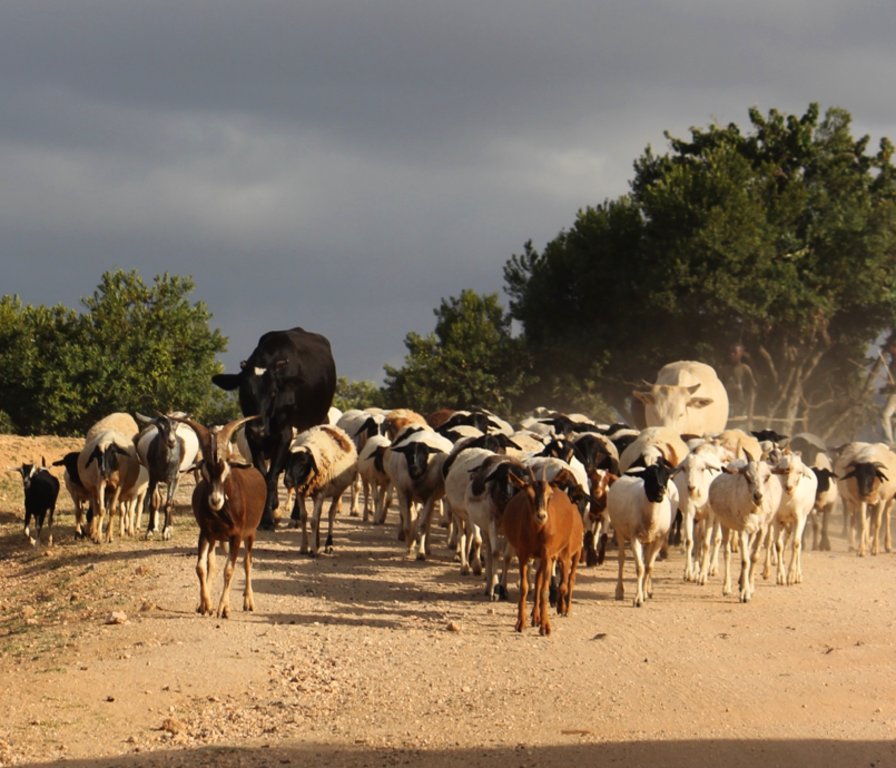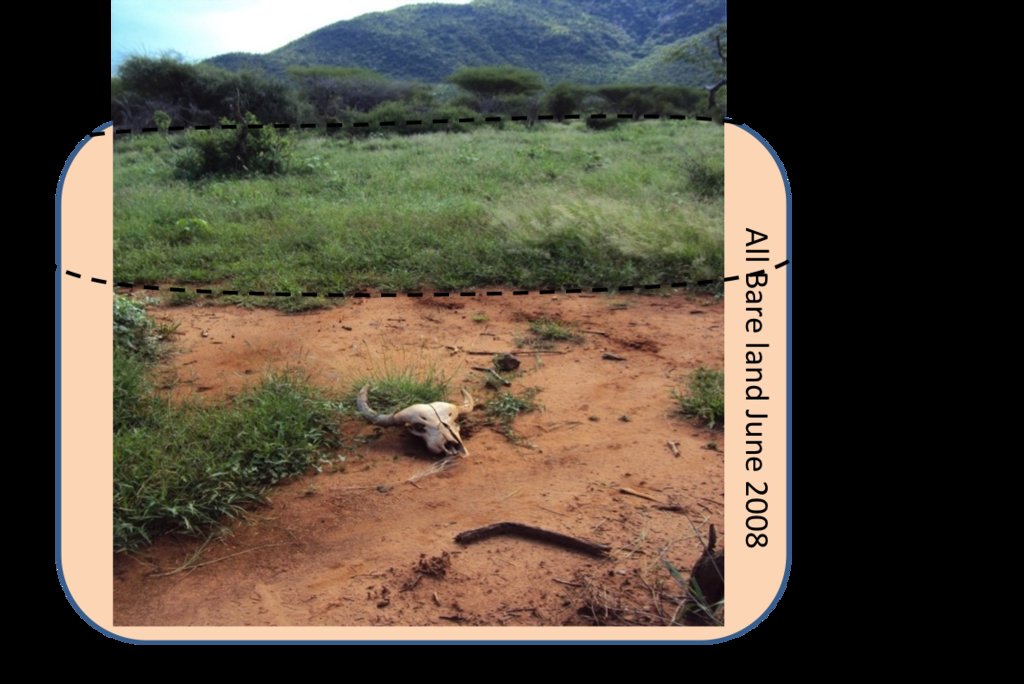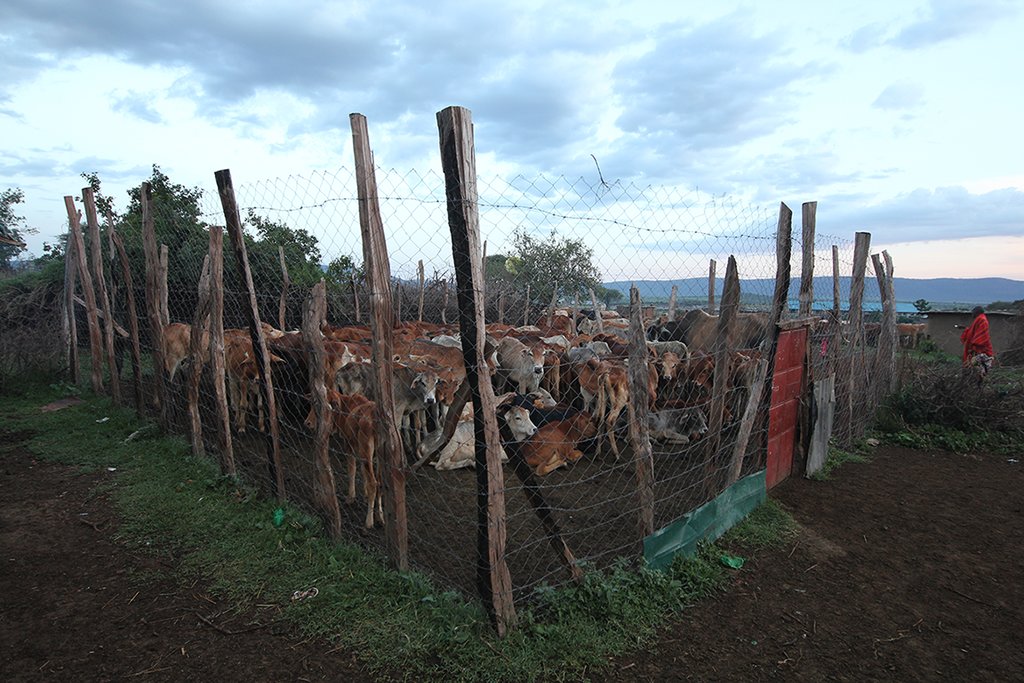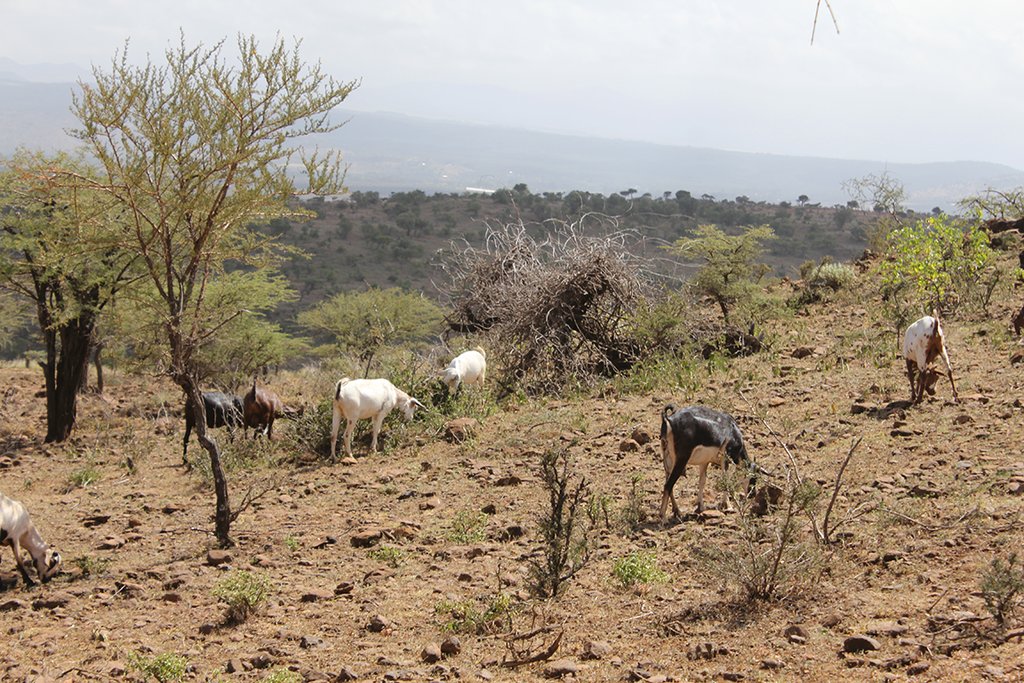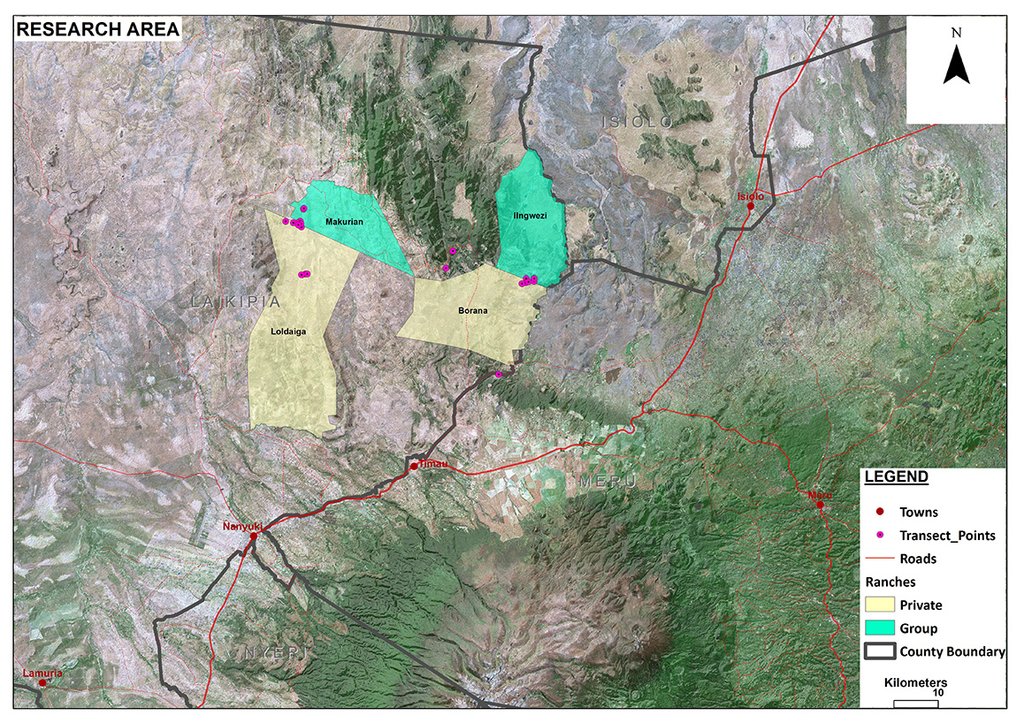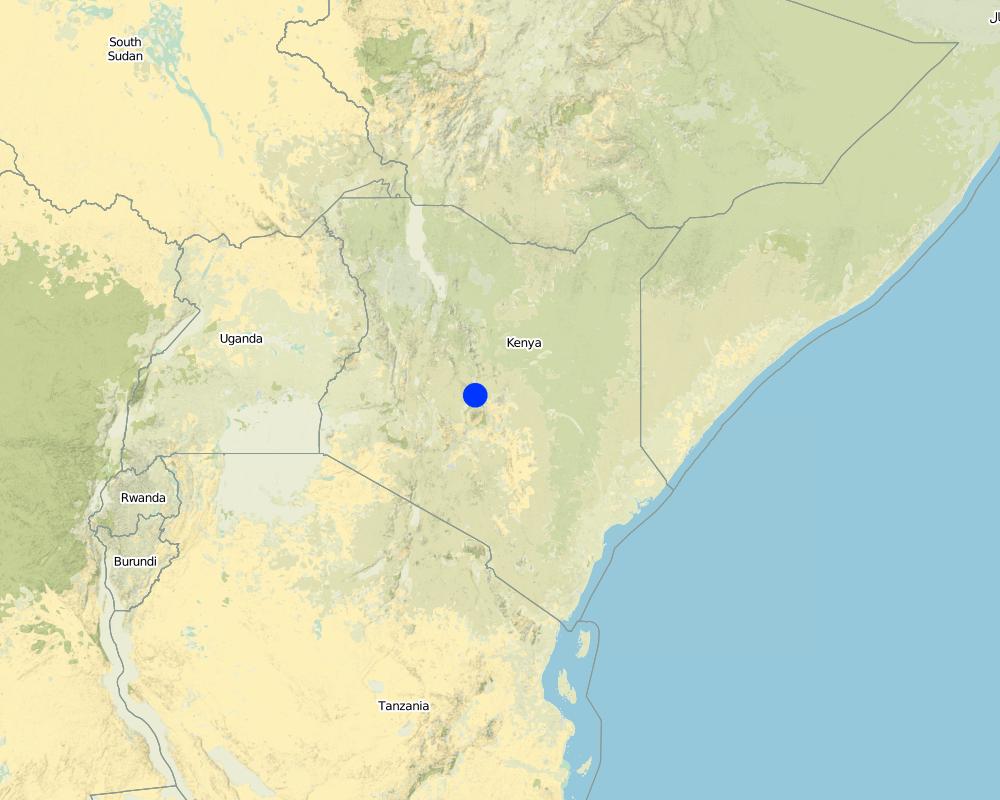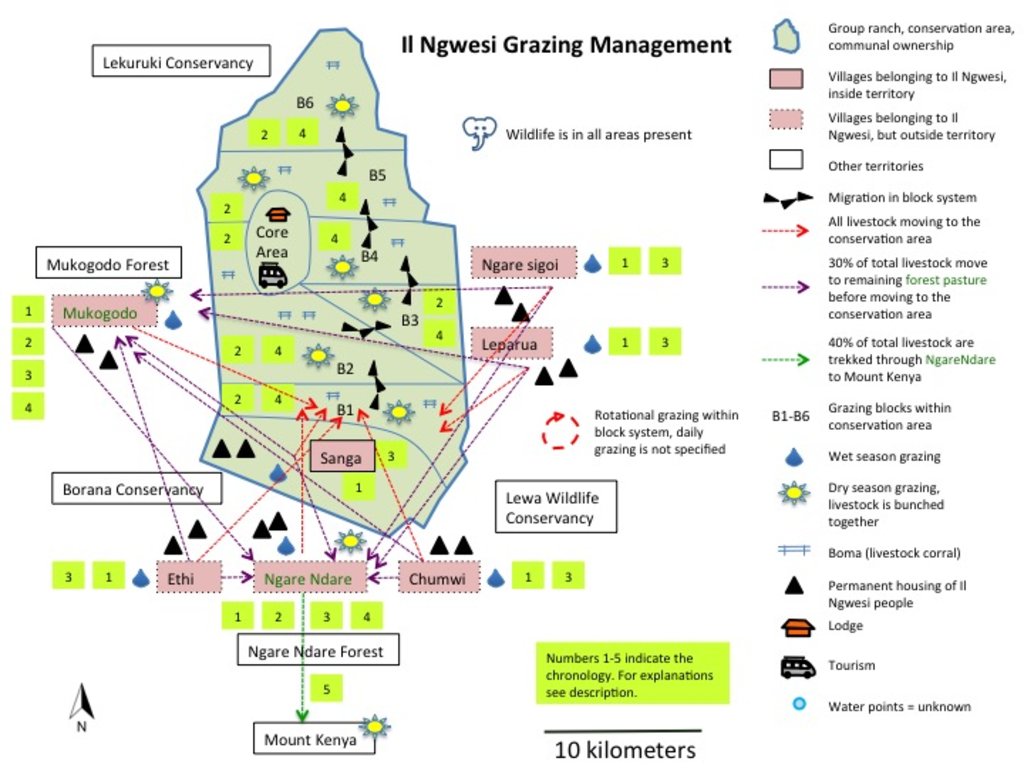Il Ngwesi Group Ranch Grazing with Holistic Management Principles [Кени]
- Шинийг нээх:
- Шинэчлэх:
- Эмхэтгэгч: Michael Herger
- Хянан тохиолдуулагч: –
- Хянагчид: Rima Mekdaschi Studer, Alexandra Gavilano
technologies_2092 - Кени
- Бүрэн хураангуйн PDF хувилбар
- Бүрэн хураангуйг PDF-ээр хэвлэх
- Хөтөч дэх бүрэн хураангуй
- Бүрэн хураангуй (форматгүй)
- Il Ngwesi Group Ranch Grazing with Holistic Management Principles: 04 9-р сар 2019 (inactive)
- Il Ngwesi Group Ranch Grazing with Holistic Management Principles: 22 2-р сар 2018 (inactive)
- Il Ngwesi Group Ranch Grazing with Holistic Management Principles: 11 7-р сар 2018 (inactive)
- Il Ngwesi Group Ranch Grazing with Holistic Management Principles: 03 9-р сар 2018 (inactive)
- Il Ngwesi Group Ranch Grazing with Holistic Management Principles: 04 10-р сар 2018 (inactive)
- Il Ngwesi Group Ranch Grazing with Holistic Management Principles: 02 11-р сар 2021 (inactive)
- Il Ngwesi Group Ranch Grazing with Holistic Management Principles: 02 11-р сар 2021 (public)
- Il Ngwesi Group Ranch Grazing with Holistic Management Principles: 01 2-р сар 2018 (inactive)
Бүлгүүдийг үзэх
Бүгдийг дэлгэх Бүгдийг хаах1. Ерөнхий мэдээлэл
1.2 Технологийг үнэлэх, баримтжуулах ажилд хамаарах мэдээлэл өгсөн хүмүүс, байгууллагуудын холбоо барих мэдээлэл
Мэдээлэл өгсөн хүн (с)
Газар ашиглагч:
Leresi Patrick
+254721153572
ilngwesi@nrt-kenya.org
Il Ngwesi Group Ranch
Mukogodo Division, Laikipia North District, PO Box 263, 1042 Timau, Kenya
Кени
1.3 ВОКАТ-аар баримтжуулсан өгөгдлийг ашиглахтай холбоотой нөхцөл
Мэдээллийг хэзээ (газар дээр нь) цуглуулсан бэ?
22/01/2017
Эмхэтгэгч болон гол мэдээлэгч хүн(хүмүүс) WOCAT аргачлалаар баримтжуулсан мэдээллийг ашиглахтай холбоотой нөхцлийг хүлээн зөвшөөрсөн:
Тийм
1.4 Технологи тогтвортой гэдгийг баталгаажуулах
Энэ технологийг газрын доройтлыг бууруулж, газрын тогтвортой менежментийг хангахад тохиромжтой гэж үзэж болох уу?
Үгүй
Тайлбар:
Yes and no, only time will tell here.
Grazing principles and management (with partly applied Holistic Managment) of Il Ngwesi Group Ranch are said to be exemplary for group ranches in the area. In evaluation processes since the introduction of the new principles and also in reports, they were rated as "best practice". Land recovery is according to these reports in full swing. However, in the field the picture looks partially different. The land is in large areas (still) heavily degraded. Data suggests that vegetation and soil is in a rather bad condition - many erosion features characterize the land. Nevertheless, according to land users, land coverage has significantly improved since the introduction of the new technologies.
2. ГТМ Технологийн тодорхойлолт
2.1 Технологийн товч тодорхойлолт
Технологийн тодорхойлолт:
A group ranch belonging to the Masai (traditionally, nomad pastoralists) has applied "Holistic Management" grazing principles. The principles consist of separate, planned grazing in villages during the rains, then “bunching” and moving of all animals in herds during the dry season. Denuded land is recovered by a "Boma” technology: i.e. strategic corralling of animals overnight, and reseeding.
2.2 Технологийн дэлгэрэнгүй тодорхойлолт
Тодорхойлолт:
On Il Ngwesi Masai Group Ranch, livestock production management is a combination of traditional livestock keeping and holistic grazing management principles which were introduced in 2007. Livestock production at Il Ngwesi is for subsistence and sales - and has very high cultural significance. 80% of the land is used for conservation, where wildlife and their habitat are protected. The vision is to integrate community development and sustainable environmental management.
Holistic Management (HM) was originally conceived by Allan Savory (1988), and is facilitated by the Laikipia Wildlife Forum. It integrates decision-making, planning, and livestock keeping. On the land, this means bunching of all livestock close together (in order to act as a "bulldozer" and break the soil to allow seeds, nutrients, and water to infiltrate) resulting in better plant growth. By moving the animals together from block to block, HM aims at managing high numbers of livestock while restoring degraded land. Instead of individual livestock-owning families herding and trekking their own animals, consolidated herds are now managed and moved together, and overseen by herders and supervisors. This allows intensive grazing in restricted areas while resting the remaining land - instead of continuous open grazing. However, Holistic Management principles are still a matter of controversy.
The group ranch land consists of a settlement and a conservation area. The conservation area is further subdivided into a small core zone, measuring 500 hectares and a larger buffer zone of 6,000 hectares. Within this buffer zone, pastoralists are permitted to graze livestock during the dry season.
Besides these two main grazing areas in their group ranch, they use additional grazing areas outside their territory such as pasture in forests. In one forest - Mukogodo - they have settled officially; in Ngare Ngare and on Mount Kenya, on the other hand, it is more of an informal agreement. In Il Ngwesi, HM principles are very strictly applied in the conservation area; elsewhere only partly or not at all. During the movements to the forest glades and Mount Kenya, HM principles are maintained as far as possible.
This documentation describes the combined grazing management system. During the rains, the grazing system is largely by traditional management: animals remain in and around villages managed individually by households. During the dry season, all livestock are bunched together and managed as one herd.
During the wet season, grazing at Il Ngwesi Group Ranch is organized by elders within their seven villages. HM principles are only partly applied. During the dry season, once all the grazing land is eaten, livestock are bunched together and managed by a few herders and overseers. The block system rotation starts. To seek new pasture and water, cattle and smallstock are led to forest glades, and then to the Il Ngwesi conservation area. As soon as the forest pasture is gone, they move on to the conservation area. Usually, this movement of livestock to forests and conservation area starts in February; then they return to the villages in April; and then back to the forests and conservation area until the next rains in November.
Whilst the livestock are bunched together, large bomas (corrals in Kiswahili) are constructed for overnight enclosure. Bomas are sited on bare land where dung accumulation and crust breaking by hooves helps rehabilitate land. Every year the boma sites are shifted slightly according to a plan. The total area that can be restored per year is almost 1% of the area of Il Ngwesi.
2.3 Технологийн гэрэл зураг
2.5 Энэ үнэлгээнд хамрагдсан технологийг хэрэгжүүлсэн улс орон/ бүс нутаг/ байршил
Улс:
Кени
Улс/аймаг/сум:
Laikipia
Байршлын дэлгэрэнгүй тодорхойлолт:
Mukogodo Divison
Map
×2.6 Хэрэгжсэн хугацаа
Хэрэгжүүлсэн он:
2007
2.7 Технологийн танилцуулга
Технологийг хэрхэн нэвтрүүлснийг тодорхойл:
- Уламжлалт системийн хэсэг (> 50 жил)
- Гадны төсөл/хөтөлбөрийн дэмжлэгтэйгээр
Тайлбар (төслийн төрөл г.м.):
Holistic Management approach by Allan Savory.
In Laikipia, it was introduced by Richard Hartfield, Laikipia Wildlife Forum and funded by Laikipia Wildlife Forum (LWF), Lewa Conservancy and Northern Rangeland Trust (NRT) (approximately 50% of all additional costs of Il Ngwesi since the implementation were covered by funding). Agreement with elders was reached first, then the community was trained.
3. ГТМ технологийн ангилал
3.1 Технологийн үндсэн зорилго (ууд)
- үйлдвэрлэлийг сайжруулах
- газрын доройтлыг бууруулах, сэргийлэх, нөхөн сэргээх
- экосистемийг хамгаалах
- биологийн төрөл зүйлийг хамгаалах / сайжруулах
3.2 Технологи нэвтрүүлсэн газрын одоогийн газар ашиглалтын хэлбэр(үүд)

Бэлчээрийн газар
Бэлчээрийн мал аж ахуйн газар:
- Хагас нүүдлийн/ бэлчээрийн мал аж ахуй
Голлох малын төрөл ба бүтээгдэхүүн:
Livestock: Cattle, goats, sheep, donkeys, camels
Meat and milk production (also blood) and as a bank/ value asset. Mainly subsistence and local production.
Livestock: 4’800 TLU; Stocking rate: 3.3 ha/TLU (calculated with the total affected land by livestock: 157km2)
Pressure on land including wildlife: 3.3 ha/TLU (stays the same, calculated with wildlife biomass density estimated by Georgiadis et al. 2007).
Livestock numbers:
Lower Il Ngwesi: 4000 cattle, 20'000 shoats, 50 donkeys, 100 camels.
Sanga: 700 cattle, 2000 shoats, 20 donkeys.
Mukogodo: 1500 cattle, 5000 shoats, 20 donkeys
Livestock fluctuations (per year): -10% sales, -5% loss due to drought/diseases, -5% slaughtered,
+30% natural breeding, new purchase and deaths are mutually offsetting.
Steers are for fattening on private ranches and during droughts other livestock can be moved to private ranches (up to 3000).
Wildlife: elephant, antelope/ gazelle (like gerenuk, impala, Thomson's gazelle, dik-dik), hares, predators and more.

Суурьшил, дэд бүтэц
- Хот суурин, барилга
Нэмэлт мэдээлэл:
Villages, bomas, manyattas.
8'000 inhabitans.
Lodge for Tourism.
3.3 Газар ашиглалтын тухай нэмэлт мэдээлэл
Технологи хэрэгжүүлсэн газрын усан хангамж:
- Байгалийн усалгаатай
Жилд ургамал ургах улирлын тоо:
- 2
Тодорхойлно уу:
Short rains in November and December. Long rains in April and May. Rains from (October) November to December are usually better in this area. Rainfalls with strong local variations and changing regimes.
Малын нягт (шаардлагатай бол):
4’800 TLU; Stocking rate: 3.3 ha/TLU. Pressure on land: 3.3 ha/TLU
3.4 Технологи ГТМ-ийн аль бүлэгт хамаарах вэ
- Бэлчээрийн мал аж ахуй ба бэлчээрийн газрын менежмент
- хөрс/ ургамлын бүрхэвч сайжруулах
3.5 Технологийн хамрах талбай
Технологи өргөн дэлгэрсэн эсхийг тодорхойл:
- газар дээр жигд тархсан
Технологи газар нутгийн хэмжээнд жигд тархсан бол түүний эзлэх талбайг дундажаар тооцож тэмдэглэ:
- 10-100 км2
Тайлбар:
Il Ngwesi has an area size of 87 km2. However, the total affected land by livestock is 157km2. The technology is also applied on other ranches (mainly private ranches, see the documentation for neighboring "Borana") in Mukogodo division.
3.6 Технологийг бүрдүүлэх ГТМ арга хэмжээ

Менежментийн арга хэмжээ
- М2: Ашиглалтын менежмент/эрчимийг өөрчлөх
- M4: Үйл ажиллагааны цаг хугацаанд том өөрчлөлт орно
3.7 Технологид харгалзах газрын доройтлын төрөл

хөрс усаар эвдрэх
- Wt: Хөрсний гадаргын угаагдал
- Wg: Гуу жалгын элэгдэл

хөрс салхиар эвдрэх
- Et: Хөрсний гадаргын зөөгдөл

хөрсний физик доройтол
- Pc: Хөрс дагтарших
- Pk: Гадарга дээр хагсах, хагарах
- Pi: хөрс хагсах

биологийн доройтол
- Bc: Ургамлан нөмрөг багасах
- Bh: Амьдрах орчин доройтох
- Bq: биомасс буурах
- Bs: Ургамлын чанар, төрөл зүйл, олон янз байдал буурах
- Bl: Хөрсөн дэхь амьдрал алдагдах
Тайлбар:
Across the grasslands and rangelands an increase in bare land and bush has been a clear trend all over Laikipia for many years, both on community-owned lands and private ranches. Major identified ecological problems (partly) caused by livestock production are: bare ground, low contents of soil organic carbon and plant-available nutrients, soil erosion (sealing, crusting, rills and gullies, water flow patterns, sheet erosion, pedestals), poor soil properties, undesirable species, and (increasing) woody and invasive species. However, Il Ngwesi is not affected by the invasive species Opuntia stricta. For more information on rangeland health see Herger (2018). The technology aims at improving vegetation cover of the land and thereby reducing further degradation and restoring degraded land.
3.8 Газрын доройтлоос урьдчилан сэргийлэх, сааруулах ба нөхөн сэргээх
Газрын доройтолтой холбоотойгоор Технологи ямар зорилго тавьсан болохыг тодорхойл:
- Газрын доройтлыг бууруулах
- Хүчтэй доройтсон газрыг нөхөн сэргээх/ сайжруулах
4. Техникийн нөхцөл, хэрэгжүүлсэн үйл ажиллагаа, материал ба зардал
4.1 Технологийн техник зураг
4.2 Техникийн үзүүлэлт/ техникийн зургийн тайлбар
Grazing map of Il Ngwesi in Mukogodo Division
Grazing Principles:
- Rotational, planned grazing
- Bunching
- Resting periods for pasture
- Bomas for bare patches (night corrals)
Value Chain:
• Natural Breeding/buying (Ranches & individually)
• Grazing
o Settlement area (in red, during the wet season, until pasture is gone, organised by elders, bunching of all animals as soon as it gets dry)
o Mukogodo Forest / Ngare Ndare Forest (30% of total livestock, remainder to conservation area for grazing directly)
o Conservation area (6 blocks)
o Mukogodo Forest/Ngare Ndare Forest/Mount Kenya (Ngare Ndare Forest as corridor to Mount Kenya, about 40% of total livestock goes to Mount Kenya)
• Need-driven sales to local butcheries/NRT/Ranches
Il Ngwesi Masai also started to buy land outside their Group Ranch.
4.3 Материал болон зардалд хамаарах ерөнхий мэдээлэл
Үнэ өртөг, оруулсан хувь нэмрийг хэрхэн тооцсоныг тодорхойл:
- Технологийн нэгж тус бүр
Нэгжийг тодорхойл:
Herders, animals treatment. For the whole area affected by livestock (157 km2)
Үнэ өртөгийг тооцоход ашигласан мөнгөн нэгж:
- Америк доллар
Хөлсний ажилчны нэг өдрийн цалингийн хэмжээг тодорхойлно уу:
USD 2.5
4.4 Бий болгох үйл ажиллагаа
| Үйл ажиллагаа | Арга хэмжээний төрөл | Хугацаа | |
|---|---|---|---|
| 1. | Training of elders and community by project leaders | Менежментийн | |
| 2. | Grazing planning for bunched animals (livestock from all households) | Менежментийн | |
| 3. | Hiring herders, supervisors, watchmen etc | Менежментийн |
4.5 Бий болгоход шаардагдсан зардал, хөрөнгийн өртөг
| Зардлын нэр, төрөл | Хэмжих нэгж | Тоо хэмжээ | Нэгжийн үнэ | Зардал бүрийн нийт өртөг | Нийт дүнгээс газар ашиглагчийн төлсөн % | |
|---|---|---|---|---|---|---|
| Хөдөлмөр эрхлэлт | Costs for establishment unknown |
Тайлбар:
Trainings were funded by NRT, LWF and Lewa Conservancy. No figures on this.
4.6 Арчилгаа/ урсгал үйл ажиллагаа
| Үйл ажиллагаа | Арга хэмжээний төрөл | Хугацаа/ давтамж | |
|---|---|---|---|
| 1. | Herders, supervisors, watchmen etc | Менежментийн | |
| 2. | Animal treatments (vaccination, spraying, injections) | Агрономийн | |
| 3. | Planning activites | Менежментийн | |
| 4. | Boma Management (mainly movement of Bomas) | Менежментийн |
4.7 Арчилгаа/урсгал ажилд шаардагдсан зардал, хөрөнгийн өртөг (нэг жилд)
| Зардлын нэр, төрөл | Хэмжих нэгж | Тоо хэмжээ | Нэгжийн үнэ | Зардал бүрийн нийт өртөг | Нийт дүнгээс газар ашиглагчийн төлсөн % | |
|---|---|---|---|---|---|---|
| Хөдөлмөр эрхлэлт | Herders, watchmen | Person-days | 250.0 | 540.0 | 135000.0 | 100.0 |
| Хөдөлмөр эрхлэлт | Supervisors | Person-days | 3.0 | 720.0 | 2160.0 | 100.0 |
| Хөдөлмөр эрхлэлт | Planning activities, management | Person-days | 20.0 | 1500.0 | 30000.0 | 100.0 |
| Хөдөлмөр эрхлэлт | Livestock-owning families (for wet season, no wages paid, livelihood) | Person-days | 8000.0 | 300.0 | 2400000.0 | |
| Барилгын материал | Boma Movement | |||||
| Бусад | Animals treatments (spraying against ticks) | Per livestock unit | 5000.0 | 5.0 | 25000.0 | 100.0 |
| Бусад | Injections, vaccine | Per livestock unit | 5000.0 | 3.0 | 15000.0 | 100.0 |
| Технологийн арчилгаа/урсгал үйл ажиллагаанд шаардагдах нийт үнэ өртөг | 2607160.0 | |||||
Хэрэв газар ашиглагч нийт зардлын 100% -иас бага хэсгийг төлсөн бол хэн голлох зардлыг гаргасан бэ:
Overall additional costs since introduction of new technology are estimated at 20% higher than before. 50% are covered by project funding (LWF, NRT, Lewa Conservancy)
Тайлбар:
Costs per unit are multiplied by days.
According to the interviewed manager, total costs are only USD 18'000 (without herders). However, the listing of all costs results in much higher total costs. Total animal treatment costs for Makurian Group Ranch in comparison are USD 428'000 (labor USD 380'000, animal treatment USD 48'000, without livestock-owning families).
Also, people living in the area (population of 8'000 inhabitants) are involved in livestock keeping and are included here in calcuations as labor (for 3 months, wet season, 10% of total population).
Cost/benefit is currently negative for livestock keeping. Income due to livestock sales is roughly estimated USD 340'000 (price for cattle on average USD 400 per unit, sales around 500 p.a., price for goats and sheep each USD 40 per unit, sales around 2'000 p.a., slaughtered units (for subsistence use) cattle: 50, shoats: 1'000 - detailed figures available Herger 2018)
4.8 Зардалд нөлөөлж байгаа хамгийн чухал хүчин зүйл
Өртөг, зардалд нөлөөлөх гол хүчин зүйл:
- Managing of one big herd, many supervisors needed.
- Movement of bomas
- Livestock-owning families (although they obviously don't receive any salary): this is simultaneously their livelihood and used for subsistence. But once all their livestock is bunched in a big herd, they lose their nutritional source (milk, blood) and livelihood (sometimes they keep back a few units for this reason).
5. Байгаль ба нийгмийн нөхцөл
5.1 Уур амьсгал
Жилийн нийлбэр хур тундас
- < 250 мм
- 251-500 мм
- 501-750 мм
- 751-1,000 мм
- 1,001-1,500 мм
- 1,501-2,000 мм
- 2,001-3,000 мм
- 3,001-4,000 мм
- > 4,000 мм
Жилийн дундаж хур тунадас (хэрэв мэдэгдэж байвал), мм:
500.00
Хур тунадасны талаархи тодорхойлолт/ тайлбар:
Rainfall gauge Borana HQ average from 2013-2016 (neighboring ranch). Strong local (and temporal) variation, changing rainfall regimes. Il Ngwesi is generally drier than Borana. Grazing areas are on different altitudes with different rainfall amounts. While Il Ngwesi Sanga (as one of the villages) is at almost 1700 m a.s.l. with similar rainfall like Borana HQ, Il Ngwesi Conservation area is at 1220 m a.s.l. with significantly lower precipitation (no rainfall gauge). Grazing glades in Mukgodo Forest are at 1850 m a.s.l. and in Ngare Ndare Forest at almost 2100 m a.s.l. (no rainfall measurements available, higher rainfall amounts) and varying heights with much higher precipitation on Mount Kenya (no defined areas).
Холбогдох цаг уурын станцын нэр:
Rainfall gauge Borana HQ
Агро-уур амьсгалын бүс
- хагас хуурай
5.2 Гадаргын хэлбэр
Дундаж налуу:
- хавтгай (0-2 %)
- бага зэрэг налуу (3-5 %)
- дунд зэрэг налуу (6-10 % )
- хэвгий (11-15 %)
- налуу (16-30 %)
- их налуу (31-60 % )
- эгц налуу (>60 %)
Гадаргын хэлбэр:
- тэгш өндөрлөг / тал
- нуруу
- уулын энгэр
- дов толгод
- бэл
- хөндий
Өндрийн бүслүүр:
- 0-100 д.т.д. м.
- 101-500 д.т.д. м.
- 501-1,000 д.т.д м.
- 1,001-1,500 д.т.д м.
- 1,501-2,000 д.т.д м.
- 2,001-2,500 д.т.д. м.
- 2,501-3,000 д.т.д. м.
- 3,001-4,000 д.т.д м.
- > 4,000 д.т.д. м.
Технологи дараах асуудалд хандсан эсэхийг тодорхойл:
- хамааралгүй
Гадаргын талаархи тодорхойлолт ба бусад тайлбар:
Hilly areas (e.g. Sanga village) and flat areas in lower altitude (conservation area).
5.3 Хөрс
Хөрсний дундаж зузаан:
- маш нимгэн (0-20 см)
- нимгэн (21-50 см)
- дунд зэрэг зузаан (51-80 см)
- зузаан (81-120 cм)
- маш зузаан (>120 cм)
Хөрсний бүтэц (өнгөн хөрс):
- бүдүүн/ хөнгөн (элсэрхэг)
- нарийн /хүнд (шаварлаг)
Хөрсний бүтэц (>20 см-ээс доош):
- бүдүүн/ хөнгөн (элсэрхэг)
- нарийн /хүнд (шаварлаг)
Өнгөн хөрсөнд агуулагдах ялзмаг:
- бага (<1 % )
Боломжтой бол хөрсний бүрэн тодорхойлолт, боломжит мэдээллийг өгнө үү, жишээ нь хөрсний төрөл, хөрсний урвалын орчин/хүчиллэг байдал, катион солилцох чадавхи, азотын хэмжээ, давсжилт г.м.
Red and brown sandy soils. Black cotton soil. Luvisol, Regosol, Vertisol
SOC 1.1-1.4 %
pH: 6.3
Clay: 12%
Silt: 53%
Sand: 35%
More information in Herger (2018)
5.4 Усны хүртээмж ба чанар
Гүний усны түвшин:
> 50 м
Гадаргын усны хүртээмж:
дунд зэрэг
Усны чанар (цэвэршүүлээгүй):
муу чанарын ундны ус (цэвэршүүлэх шаардлагатай)
Усны давсжилтын асуудал бий юу?
Үгүй
Энэ газар үерт автдаг уу?
Үгүй
Усны чанар, нөөцийн талаархи тайлбар ба бусад тодорхойлолт:
Few springs, Ngare Ndare river, no boreholes. Source is Mount Kenya
5.5 Биологийн олон янз байдал
Зүйлийн олон янз байдал:
- дунд зэрэг
Амьдрах орчны олон янз байдал:
- дунд зэрэг
Биологийн олон янз байдлын талаархи тайлбар ба бусад тодорхойлолт:
Grassed acacia bushland. Bare land up to 70% during the dry season. Loss of (native) vegetation. Invasive species coming in. Dominant grasses: Eragrostis species, Cynadon species, Hyparrhenia species, Kelenger species. Dominant shrubs: Solyneum inconum, Ipomea hildebranditi, Lyceum europaeum, Barleria acuthodies. Dominant trees: Acacia tortilis, Acacia mellifera, Acacia nilotica, Acacia etbaica, Boscia angustifolia. Detailed list of all species (also wildlife) available (see Herger 2018).
5.6 Технологи нэвтрүүлсэн газар ашиглагчдын тухай мэдээлэл
Суурьшмал эсвэл нүүдлийн:
- Хагас-нүүдэлийн
Үйлдвэрлэлийн системийн зах зээлийн чиг баримжаа:
- холимог (амь зуух/ худалдаа наймаа
Бусад эх үүсвэрээс олох орлого:
- Нийт орлогын 10 %-иас доош
Чинээлэг байдлын түвшин:
- ядуу
Хувь хүн эсвэл бүлэг:
- Хувь хүн / өрх
- бүлэг / олон нийтийн
Механикжилтын түвшин:
- гар ажил
Хүйс:
- эмэгтэй
- эрэгтэй
Газар ашиглагчийн нас:
- залуус
- дунд нас
Газар ашиглагчдын бусад шинж чанарыг тодорхойл:
Masai people. 8'000 Masai living in Il Ngwesi. Traditional lifestyle. Livestock with very high cultural value. About 10% subsistence use, 90% is sold for local and national markets (mainly local).
Very little agriculture; tourism (award-winning eco-lodge in conservation area); people start to diversify. Schooling of children has a high importance today (e.g. smallstock is sold for school fees). Children and young warriors are traditionally herders, however, it is shifting towards hiring herders and sending children to school.
Have been historically "squeezed" from all sides into smaller areas for livestock keeping. Future of pastoralism is in question.
5.7 Технологи нэвтрүүлсэн газар ашиглагчийн өмчилж буй, эзэмшиж буй, түрээсэлж буй эсвэл ашиглаж буй (ашиглах эрх) газрын талбай
- < 0.5 га
- 0.5-1 га
- 1-2 га
- 2-5 га
- 5-15 га
- 15-50 га
- 50-100 га
- 100-500 га
- 500-1,000 га
- 1,000-10,000 га
- > 10,000 га
Энэ талбай том, жижиг, дунд алинд хамаарах вэ (орон нутгийн нөхцөлд харгалзуулна уу)?
- бага-хэмжээний
Тайлбар:
Applies for one household. Herders on the other hand trek livestock over an area of more than 10'000 ha.
5.8 Газар эзэмшил, газар ашиглах эрх, ус ашиглах эрх
Газар өмчлөл:
- нэгдлийн/ тосгон
Газар ашиглах эрх:
- нэгдлийн хэлбэрээр (зохион байгуулалттай)
Ус ашиглах эрх:
- нээлттэй хүртэх (зохион байгуулалтгүй)
5.9 Дэд бүтэц, үйлчилгээний хүртээмж
эрүүл мэнд:
- ядуу
- дунд зэргийн
- сайн
боловсрол:
- ядуу
- дунд зэргийн
- сайн
техник зөвлөгөө:
- ядуу
- дунд зэргийн
- сайн
хөдөлмөр эрхлэлт (жишээ нь, ХАА-аас өөр):
- ядуу
- дунд зэргийн
- сайн
зах зээл:
- ядуу
- дунд зэргийн
- сайн
эрчим хүчний хангамж:
- ядуу
- дунд зэргийн
- сайн
зам тээвэр:
- ядуу
- дунд зэргийн
- сайн
усан хангамж ба ариутгал:
- ядуу
- дунд зэргийн
- сайн
санхүүгийн үйлчилгээ:
- ядуу
- дунд зэргийн
- сайн
6. Үр нөлөө ба дүгнэлт
6.1 Технологийн талбайд үзүүлсэн нөлөө
Нийгэм-эдийн засгийн үр нөлөө
Үйлдвэрлэл
тэжээл үйлдвэрлэл
тэжээлийн чанар
малын бүтээмж
газрын менежмент
Усны хүртээмж ба чанар
ундны усны хүрэлцээ
мал услах усны хүрэлцээ
Орлого, зарлага
ажлын хэмжээ
Тайлбар/ тодорхой дурьдах:
20-30% above normal (supervision, watchmen, moving big bomas). Previously, every household managed their livestock individually
Нийгэм-соёлын үр нөлөө
хүнсний аюулгүй байдал/ өөрийн хэрэгцээг хангах
газар ашиглалт / усны эрх
ГТМ/ газрын доройтлын мэдлэг
маргааныг шийдвэрлэх
Тайлбар/ тодорхой дурьдах:
External! Better land cover attracts invaders (Invasion from northern tribes), envy
нийгэм, эдийн засгийн хувьд эмзэг бүлгийнхний нөхцөл байдал
Тайлбар/ тодорхой дурьдах:
Poorest livestock-owning families are better off now since their livestock are also bunched together with all the others. For instance, before they couldn't afford to trek their 5 cows to Mount Kenya for pasture, now their livestock are trekked with all the others - all have the same opportunities. Other households are complaining about this since they can't decide on their own anymore where they want to bring their livestock for grazing.
Экологийн үр нөлөө
Усны эргэлт/ илүүдэл
усны хэмжээ
Тайлбар/ тодорхой дурьдах:
less runoff, more water stored in the soil.
гадаргын урсац
гүний усны түвшин / уст давхарга
ууршилт
Хөрс
хөрсний чийг
хөрсөн бүрхэвч
хөрс алдагдах
хөрс хагарах/ хагсах
хөрс нягтрах
шимт бодисын эргэлт/ сэргэлт
хөрсний органик нэгдэл/ хөрсөнд агуулагдах карбон
Биологийн олон янз байдал: ургамал, амьтан
Ургамалын бүрхэвч
ургамлын төрөл, зүйл
түрэмгий, харь зүйл
Тайлбар/ тодорхой дурьдах:
Il Ngwesi is not affected by the huge invasion of the exotic cactus, Opuntia stricta. However, there are some other invasives like Lantana in the area, but not as problematic as Opuntia. According to land users, native vegetation cover has improved, which results in fewer invasive species.
Уур амьсгал болон гамшгийн эрсдлийг бууруулах
гангийн нөлөө
6.2 Технологийн талбайн гадна үзүүлсэн үр нөлөө
Усны хүртээмж
Тайлбар/ тодорхой дурьдах:
More stored in the soil. According to the land users, no measurements conducted.
Нөлөөллийн үнэлгээнд хамаарах нэмэлт тайлбар:
All listed impacts are as perceived by land users according to Patrick Leseri, Conservation Manager. In his opinion, vegetation cover has thanks to the new technologies improved. Planning activities significantly increased and therefore also socio-economic and ecological conditions improved. Results from a rangeland health assessment (only ecological conditions) show on the other hand partly heavily degraded ecological conditions (poor soil and vegetation, erosions features, inability of producing annual grasses after rains etc) (Herger 2018). Land users and experts are aware that the ecological conditions of this Group Ranch are still far from optimal, but do see good progress and exemplary management as well as slightly better conditions than on other Group Ranches.
6.3 Технологийн уур амьсгалын өөрчлөлт, цаг агаарын гамшигт үзэгдэлд өртөх байдал ба эмзэг байдал (газар ашиглагчийн бодлоор)
Уур амьсгалын аажим өөрчлөлт
Уур амьсгалын аажим өөрчлөлт
| Улирал | Уур амьсгалын өөрчлөлт/экстрим үзэгдлийн төрөл | Технологи түүний нөлөөг хэрхэн бууруулж байна? | |
|---|---|---|---|
| бусад аажим уур амьсгалын өөрчлөлт | Greater variation of seasonal rainfall, higher intensity of rainfall events, change in rainfall regimes in general (see Schmocker 2013 and Imfeld 2016). | Өсөлт | сайн |
Уур амьсгалаас хамаарах аюул (гамшиг)
Уур амьсгалын гамшиг
| Технологи түүний нөлөөг хэрхэн бууруулж байна? | |
|---|---|
| хэт халалт | сайн |
Тайлбар:
Improved rangeland health, better internal organization, and cooperations make them less vulnerable to climate change impacts.
6.4 Өртөг ба ашгийн шинжилгээ
Бий болгох зардалтай харьцуулахад ямар ашиг өгсөн бэ (газар ашиглагчийн бодлоор)?
Богино хугацаанд эргэн төлөгдөх байдал:
бага зэрэг сөрөг
Урт хугацаанд эргэн төлөгдөх байдал:
эерэг
Арчилгаа/урсгал зардалтай харьцуулахад ямар ашиг өгсөн бэ (газар ашиглагчийн бодлоор)?
Богино хугацаанд эргэн төлөгдөх байдал:
эерэг
Урт хугацаанд эргэн төлөгдөх байдал:
эерэг
6.5 Технологи нэвтрүүлэлт
- 10-50%
Боломжтой бол, тоогоор илэрхийл (өрхийн тоо эсвэл бүрхэх талбай):
50%
Технологи нэвтрүүлсэн хүмүүсээс хэд нь өөрийн хүчээр технологийг хэрэгжүүлсэн бэ, өөрөөр хэлбэл гадны тусламж дэмжлэг авалгүйгээр?
- 0-10%
6.6 Дасан зохицох
Бий болсон өөрчлөлтөд зохицуулан технологийг өөрчилсөн үү?
Тийм
Хэрэв Тийм бол ямар өөрчлөлтөд дасан зохицсон бэ:
- уур амьсгалын өөрчлөлт/ экстрим үзэгдэл
Дасан зохицох зорилгоор технологид хийсэн өөрчлөлт (хийц, материал, төрөл зүйл г.м.):
Masai people have changed their livestock composition towards owning more smallstock (goats and sheep) than cattle. Goats are tolerant of drought, and as browsers, they don't need any grass. Also, they can be turned into money much quicker than a cow in times of need and because of their more rapid reproductive cycle. They can also recover number more quickly after livestock losses through drought
6.7 Технологийн давуу тал/боломжууд
| Газар ашиглагчдын тодорхойлсон давуу тал/боломжууд |
|---|
| Proper utilisation of pasture – controlled usage/grazing |
| Land recovery (more cover, more water, more fodder, less erosion) |
| Carrying capacity increased |
| Traditional knowledge is still used |
| More dialogue in community: brings everyone in the community together – they have a common point – everyone has the same interest |
| Improving breeds is easier (because all are bunched together) |
| Easy vaccination of all livestock at once |
| Approving cultural lifestyle of Masai: the higher the livestock numbers – the better for the land |
| Better for disadvantaged community members: for instance for those who could not afford to move their livestock to Mt Kenya on their own before |
| Эмхэтгэгч, бусад мэдээлэл өгсөн хүмүүсийн өнцгөөс тодорхойлсон давуу тал/боломжууд |
|---|
| The listed advantages from Patrick Leseri, the land user, are for the most part shared share with the compiler's view. Improved planning of livestock production with planned grazing and long resting periods, improved dialogue in the community, and the named advantages of a big herd (like easy vaccination etc) are important advantages. Regarding Holistic Management (HM) principles, there remains uncertainty about land recovery. On the one hand, it is generally questionable to state as in HM: “the more animals the better” (as long as they are managed properly they can even recover degraded land), which seems dangerous in areas with such high livestock numbers and cultural value of livestock keeping - without scientific proof of the principles in similar ecological conditions. We have witnessed rather poor condition of the land, and the much-vaunted good land was difficult to find. Favourable descriptions might also be related to funding of the project. Results from a rangeland health assessment show (partly) heavily degraded ecological conditions (bare ground, poor soil and vegetation, erosion features, partly an inability of producing perennial and annual grasses after rains etc) (see Herger 2018). However, an evaluation of change over time is impossible to assess. Further monitoring is necessary. Land users and experts are aware that the ecological conditions of this Group Ranch are still far from optimal, but do see good progress and exemplary management as well as slightly better conditions than on other Group Ranches. However, the efforts towards good management and a sense of community was not difficult to notice. |
6.8 Технологийн дутагдалтай/сул тал/аюул болон тэдгээрийг хэрхэн даван туулах арга зам
| Газар ашиглагч нарын тодорхойлсон сул тал/ дутагдал/ эрсдэл | Тэдгээрийг хэрхэн даван туулах вэ? |
|---|---|
| Higher costs. Above 20% more than normal costs. NRT, Laikipia Wildlife Forum and Lewa conservancy as main funders for applying holisitc management principles. Since 2007 they covered about 50% of all costs.. | |
| More labour intensive. 20-30% above normal (supervision, watchmen, moving big bomas) | |
| Challenge to bring people together (and their livestock) and agree on a joint management | |
| Some families still prefer to manage their livestock on their own and make their own decisions. There are no individual decisions anymore: principles apply to everyone | |
| Breeding can also be a problem – those with good genetic material (better livestock) may lose and those with poor may win by mixing | |
| Conflicts among animals; bulls fight a lot. No separation of heifers, cows, steers and bulls | |
| Management of high numbers of big herds is a challenge | |
| Diseases are easily transmitted | |
| Once livestock is collected to big herds, individual families lose their nutritional basis (milk, blood). However, some also keep a few livestock units back. | |
| Sometimes trees are cut for bomas |
7. Ном зүй ба холбоосууд
7.1 Мэдээлэл цуглуулсан арга/эх үүсвэр
- Хээрийн уулзалт, судалгаа
4 field visits with included "rangeland health assessment" in different parts of Il Ngwesi (mostly in Sanga village though) where I could see the condition of the land as well as several other visits of the area.
- Газар ашиглагчтай хийсэн ярилцлага
Several meetings with the grazing coordinator, conservation manager, chief, elders, and other resource people of Il Ngwesi over half a year.
- ГТМ-ийн мэргэжилтэн/шинжээчтэй хийсэн ярилцлага
Truman Young
Dan Rubenstein
Dino Martins
John Letai
Samali Letai
Peter Hetz
Dominic Maringa
Joseph Putunoi
Patrick Ekodere
- тайлан болон бусад эх сурвалжийн бүрдэл
Scientific papers, LWF reports etc.
7.2 Ном, хэвлэлийн ишлэл
Гарчиг, зохиогч, он, ISBN:
Herger, M.B. (2018). Environmental Impacts of Red Meat Production. MSc Thesis. University of Bern.
Хаанаас авч болох вэ? Зардал?
University of Bern
Гарчиг, зохиогч, он, ISBN:
Modeling Seasonal and Annual Precipitation using long-term Climate Records and Topography. Master’s Thesis. Noemi Imfeld (2016).
Хаанаас авч болох вэ? Зардал?
University of Bern
Гарчиг, зохиогч, он, ISBN:
Savory, A (1988). Holistic Resource Management. Gilmour Publishing, Harare, Zimbabwe
Хаанаас авч болох вэ? Зардал?
Online
Холбоос ба модулууд
Бүгдийг дэлгэх Бүгдийг хаахХолбоосууд
Холбоос байхгүй байна
Модулууд
Модуль байхгүй байна


